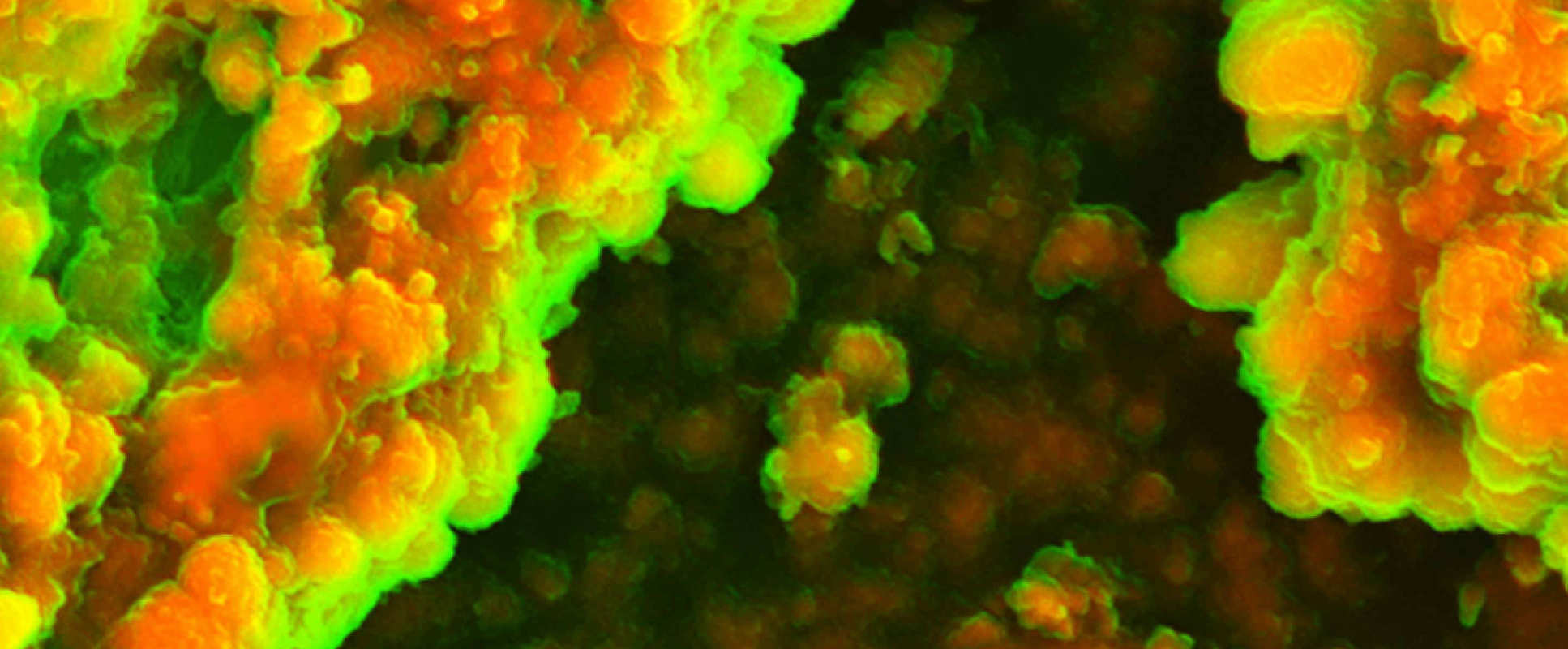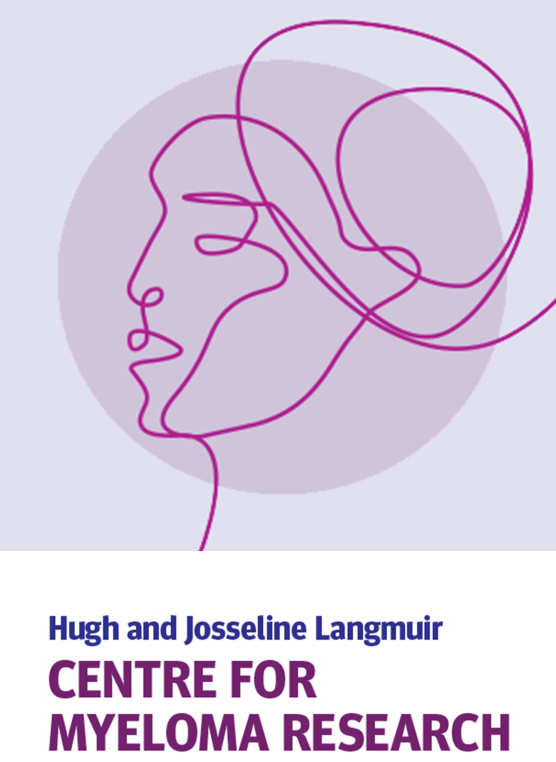
Contact
- CRUK Advanced Clinician Scientist
- Clinical Reader in Molecular Haemato-Oncology
+44 (0)20 3313 4017
holger.auner04@imperial.ac.uk
Areas of research
Proteotoxic stress and metabolism
Myeloma cells are characterised by a unique sensitivity to inhibitors of the proteasome, which is responsible for the controlled degradation of most cellular proteins that have become damaged or are otherwise unwanted. Nevertheless, resistance to proteasome inhibitors occurs in essentially all patients to varying degrees. Accumulation of misfolded proteins in the endoplasmic reticulum (ER), which triggers proteotoxic ‘ER stress’, is widely believed to be the main mechanism of action of proteasome inhibitors. However, data from our lab and other research groups suggest complex interactions between proteasomal protein degradation and multiple metabolic processes. Our aim is to find metabolic and proteostatic vulnerabilities that we can exploit therapeutically.
Tissue biophysics in myeloma biology
Several important aspects of cancer cell biology are influenced by mechanical cues from the surrounding tissue. In particular, mechanical interactions and matrix remodelling have been shown to govern cancer cell metabolism. Tissue stiffness also impacts on normal haematopoiesis, and mechanical cues are known to modulate therapeutic responses. Moreover, we have shown that proteostasis-targeting drugs can alter tissue physical properties. We aim to understand how tissue stiffness and nutrient availability act together to rewire metabolic networks and regulate drug responses in myeloma.
Results
- Showing results for:
- Reset all filters
Search results
-
Conference paperMateos M, Jagannath S, Delimpasi S, et al., 2020,
Impact of Prior Therapies on the Safety and Efficacy of Once Weekly Selinexor, Bortezomib, and Dexamethasone Compared with Twice Weekly Bortezomib and Dexamethasone in Relapsed or Refractory Multiple Myeloma: Results from the Boston Study
, Publisher: AMER SOC HEMATOLOGY, ISSN: 0006-4971 -
Journal articleHinsley S, Walker K, Sherratt D, et al., 2020,
The MUK eight protocol: A randomised phase II trial of Cyclophosphamide and Dexamethasone in combination with Ixazomib, in relapsed or refractory multiple myeloma (RRMM) patients who have relapsed after treatment with thalidomide, lenalidomide and a proteasome inhibitor
, Trials, Vol: 21, ISSN: 1745-6215BackgroundMultiple myeloma is a plasma cell tumour with approximately 5500 new cases in the UK each year. Ixazomib is a next generation inhibitor of the 20S proteasome and is thought to be an effective treatment for those who have relapsed from bortezomib. The combination of cyclophosphamide and dexamethasone (CD) is a recognised treatment option for patients with relapsed refractory multiple myeloma (RRMM) who have relapsed after treatment with bortezomib and lenalidomide, whilst also often being combined with newer proteasome inhibitors. The most apparent combination for ixazomib is therefore with CD.MethodsMUK eight is a randomised, controlled, open, parallel group, multi-centre phase II trial that will recruit patients with RRMM who have relapsed after treatment with thalidomide, lenalidomide, and a proteasome inhibitor. The primary objective of the trial is to evaluate whether ixazomib in combination with cyclophosphamide and dexamethasone (ICD) has improved clinical activity compared to CD in terms of progression-free survival (PFS). Secondary objectives include comparing toxicity profiles and the activity and cost-effectiveness of both treatments. Since opening, the trial has been amended to allow all participants who experience disease progression (as per the IMWG criteria) on the CD arm to subsequently switch to receive ICD treatment, once progression has been confirmed with two clinical members of the Trial Management Group (TMG). This ‘switch’ phase of the study is exploratory and will assess second progression-free survival measured from randomisation to second disease progression (PFS2) and progression-free survival from the point of switching to second disease progression (PFS Switch) in participants who switch from CD to ICD treatment.DiscussionDevelopment of ixazomib offers the opportunity to further investigate the value of proteasome inhibition through oral administration in the treatment of RRMM. Previous studies investigating the safe
-
Journal articleSaavedra-Garcia P, Martini F, Auner HW, 2020,
Proteasome inhibition in multiple myeloma: lessons for other cancers
, AMERICAN JOURNAL OF PHYSIOLOGY-CELL PHYSIOLOGY, Vol: 318, Pages: C451-C462, ISSN: 0363-6143- Author Web Link
- Cite
- Citations: 15
-
Journal articleMorris C, Chabannon C, Masszi T, et al., 2020,
Results from a multi-center, non-interventional registry study for multiple myeloma patients who received stem cell mobilization regimens with and without plerixafor
, Bone Marrow Transplantation, Vol: 55, Pages: 356-366, ISSN: 1476-5365Plerixafor plus granulocyte-colony stimulating factor (G-CSF) enhances the mobilization of haematopoietic stem cells (HSCs) for collection and subsequent autologous haematopoietic stem cell transplantation (HSCT) in patients with multiple myeloma (MM).This international, multicenter, non-interventional registry study (NCT01362972), evaluated long-term outcomes for MM patients who received plerixafor versus other mobilization regimens. The comparisons were: G-CSF+plerixafor (G-CSF+P) versus G-CSF-; G-CSF+P versus G-CSF+chemotherapy (G-CSF+C); and G-CSF+P+C versus G-CSF+C. Propensity score matching was used to balance groups. Primary outcome measures were progression free survival (PFS), overall survival (OS), and cumulative incidence of relapse (CIR) after transplantation. After propensity matching, 77 versus 41 patients in the G-CSF+P versus G-CSF cohorts, 129 versus 129 in the G-CSF+P versus G-CSF+C cohort and 117 versus 117 in the G-CSF+P+C versus G-CSF+C cohort, were matched, respectively. Propensity score matching resulted in a smaller sample size and imbalances were not completely overcome. For both PFS and OS, the upper limits of the hazard ratio 95% confidence intervals exceeded pre-specified boundaries; non-inferiority was not demonstrated. CIR rates were higher in the plerixafor cohorts. G-CSF+P remains an option for the mobilization of HSCs in poor-mobilizers with MM with no substantial differences in PFS, OS and CIR in comparison with other regimens.
-
Journal articleGraziani G, Herget G, Ihorst G, et al., 2020,
Time from first symptom onset to the final diagnosis of Multiple Myeloma (MM) - possible risks and future solutions: retrospective and prospective ‘Deutsche Studiengruppe MM’ (DSMM) and ‘European Myeloma Network’ (EMN) analysis
, Leukemia and Lymphoma, Vol: 61, Pages: 875-886, ISSN: 1026-8022Multiple Myeloma (MM) often presents with unspecific symptoms and is challenging to diagnose. We performed this DSMM/EMN-analysis via test-(retro-) and validation (prospective) study to determine the time interval from the onset of first symptoms to the diagnosis of MM. The retrospective and prospective analyses were performed in 101 and 176 patients, respectively. The median time from first symptoms to the MM diagnosis in both cohorts was 4 and 6 months, respectively. Frequencies of MM-related pathologic bone fractures, renal and infectious complications at diagnosis occurred in 41%, 35% and 16% of patients, respectively. Our MM-questionnaire determined that 39% of patients were dissatisfied with the diagnostic process. PFS and OS proved insignificantly different with shorter (≤6) and longer (>6 months) latency periods. In conclusion, our in depth studies demonstrate that delays in diagnosis do not decrease PFS or OS, but induce MM-related complications and influence patients' satisfaction with their medical care.
This data is extracted from the Web of Science and reproduced under a licence from Thomson Reuters. You may not copy or re-distribute this data in whole or in part without the written consent of the Science business of Thomson Reuters.
